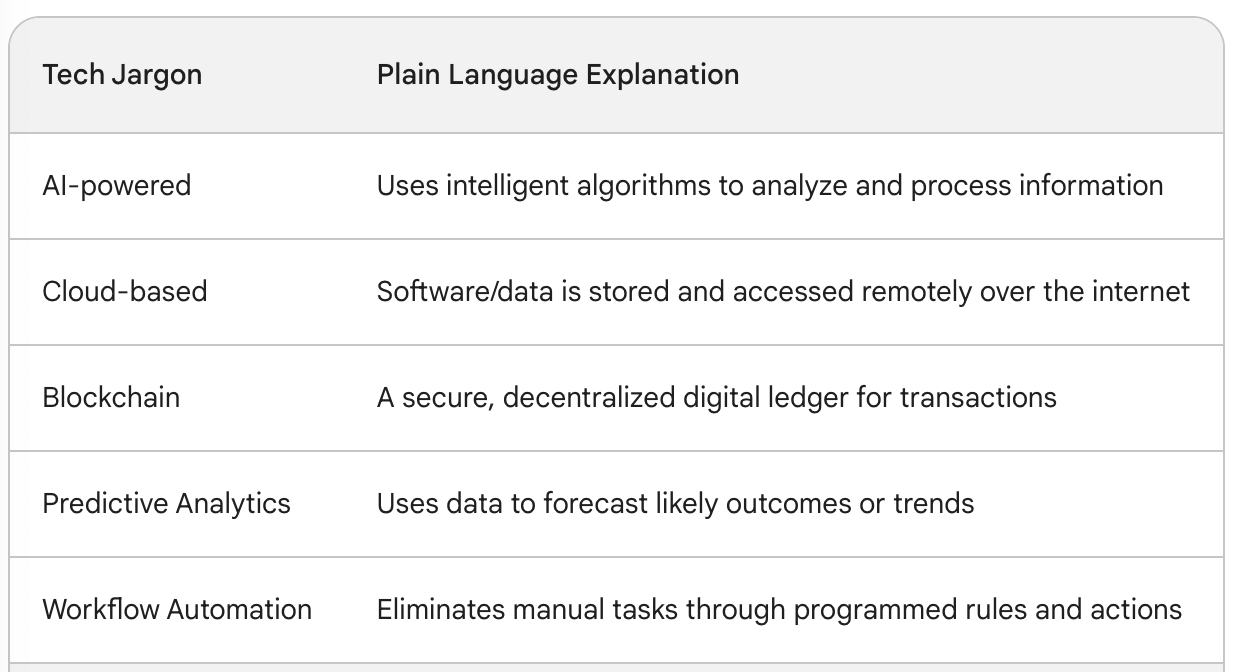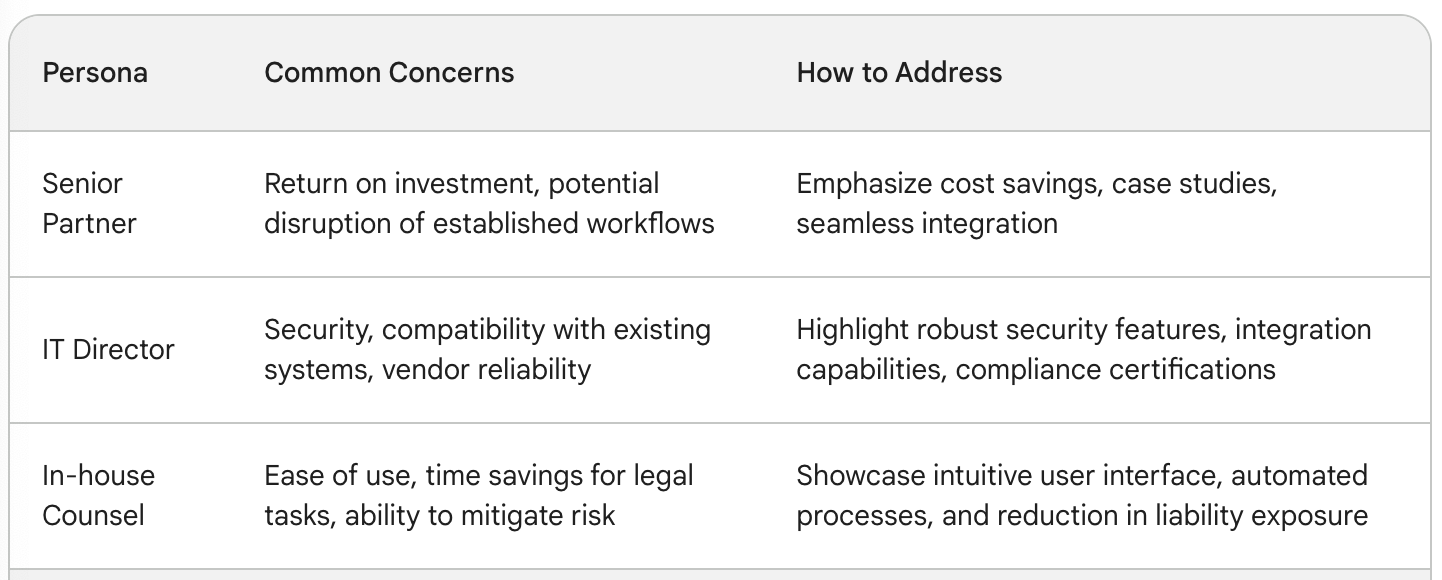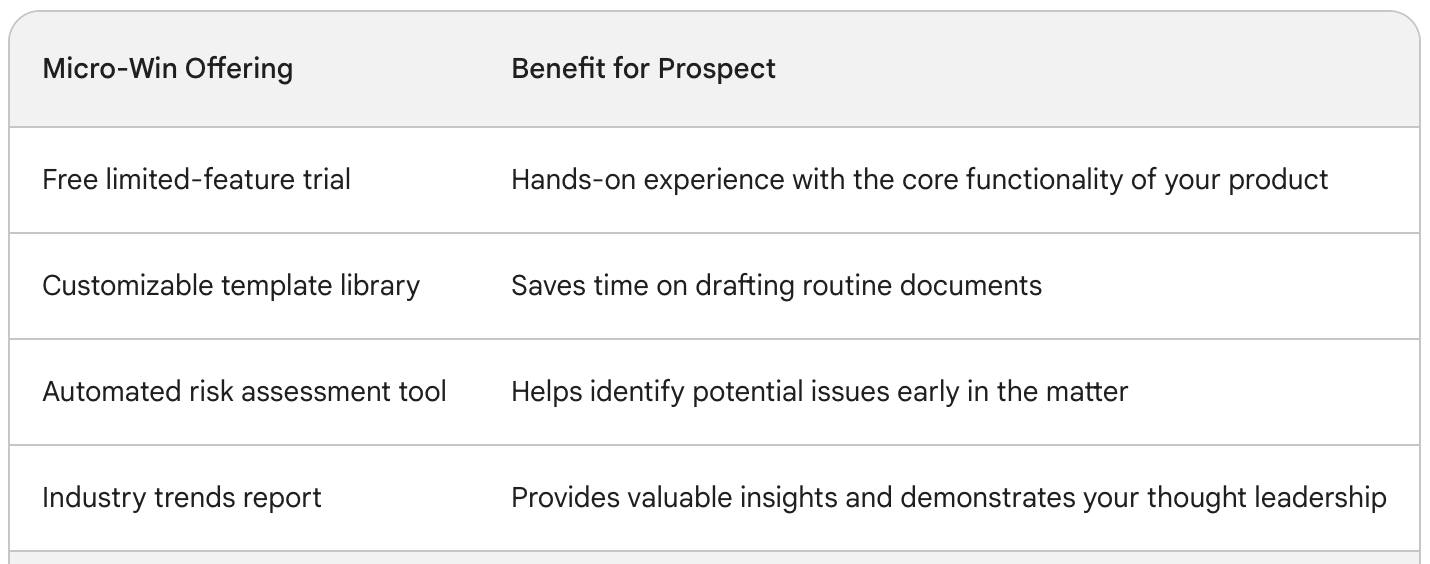The legal industry is often seen as a bastion of tradition. Yet, beneath the veneer of precedent and formality lies a growing demand for technological innovation. Product marketers in the legal tech space are finding fertile ground, but they also face a unique set of obstacles in promoting their solutions.
I've had the privilege of working with several legal tech companies. This experience has given me a nuanced understanding of the challenges and the most effective strategies to overcome them. In this blog post, I aim to share those insights with you.
Let's get into the nitty-gritty:
1. The Weight of Tradition: Combating Resistance to Change

The legal profession is rooted in procedures honed over centuries. This breeds an understandable caution towards rapid change. Even with a demonstrably superior solution, legal professionals may hesitate to disrupt established workflows.
The Tactic
It's not enough to just shout about your product's amazing features. To combat this ingrained resistance, focus on building trust and demonstrating the concrete value your product brings.
Case Studies
Real-world examples are your best friend. Showcase how your product has helped similar firms and legal departments streamline processes, reduce costs, and achieve better outcomes. Look beyond big names, as niche case studies tailored to specific practice areas are often even more persuasive.
Compliance Assurances
Data security and adherence to regulations are paramount in the legal industry. Proactively address these concerns from the outset. Don't just tell - provide certifications, transparent security policies, and references that vouch for your reliability.
2. The Knowledge Gap: Demystifying Technology

Not all legal professionals are tech-savvy. You might be dealing with brilliant attorneys who lack fluency in modern technological concepts. This disparity in understanding can create a communication barrier.

The Tactic
Bridge the knowledge gap with a calculated approach. Your marketing materials must be crafted to resonate with their perspective, not yours.
Jargon-Free Language
Avoid overly technical jargon and buzzwords that could alienate your audience. Focus on explaining the benefits of your technology in terms that relate to pain points commonly faced within the legal sphere.
Educational Content
Position yourself as a thought leader. Create blog posts, webinars, and white papers that break down complex technological concepts into digestible and actionable insights relevant to lawyers. Invest in content that focuses on solving their problems first, featuring your product as a solution, second.
Translate Features into Benefits
A laundry list of features is meaningless if prospects can't see how it impacts their practice. For instance, rather than touting 'AI-powered document analysis', frame it as 'slash review time by 50% with greater accuracy'.
3. The Complex Buying Process: Understanding the Decision-Making Labyrinth
Unlike many B2B sectors, legal tech purchases often involve a multi-layered, slow-moving buying process with numerous stakeholders. You could be dealing with partners at law firms, in-house legal teams, IT departments, and procurement – each with their own concerns and priorities.

The Tactic
Successful navigation of this labyrinth requires a multipronged approach and a deep understanding of the roles within the decision-making process.
Persona Mapping
Invest time in creating detailed buyer personas. Outline the needs, objections, and decision-making influence of each stakeholder. This allows you to tailor content and sales pitches effectively.
Nurture Campaigns
Implement targeted drip email campaigns to keep your product top-of-mind throughout the lengthy decision-making cycle. Offer valuable insights, relevant case studies, and address common objections for each persona type.
IT Alignment
Proactively build relationships with IT decision-makers. Demonstrate how your product integrates seamlessly into their existing infrastructure and satisfies their security requirements. Offer white-glove implementation support to alleviate their concerns.
4. The Echo Chamber: Cutting Through the Noise
The legal tech space is becoming increasingly crowded. Every day, new solutions emerge promising to revolutionize legal practice. In this cacophony, getting your message heard can be a Herculean task.
The Tactic
A multichannel approach is your best bet, but the key lies in differentiating your message.
Focus on Thought Leadership
Rather than blend into the background, strive to be seen as a knowledge leader. Publish insightful blog posts on industry trends, pain points, and offer valuable perspectives lawyers won't get elsewhere.
Leverage Niche Communities
Participate in relevant online forums, industry associations, and LinkedIn groups where your target audience congregates. Be genuinely helpful, answer questions, and build your reputation before directly pitching your product.
Strategic Partnerships
Consider partnering with established players in the legal tech ecosystem. Cross-promotion, co-branded content, and complementary integrations can greatly increase your visibility to a wider, qualified audience.

5. The Ethical Minefield: Navigating Client Confidentiality
Legal ethics place strict constraints on what lawyers can share about their work, including the technologies they employ. This can make it challenging to obtain testimonials and create compelling case studies, – a staple of effective tech marketing.
The Tactic
While you need to respect these ethical boundaries, proactive workarounds exist:
Client Anonymization
Work with clients who are willing to participate in case studies under the veil of anonymity. You can still spotlight the problem they faced, the solution you provided, and the tangible outcomes without disclosing sensitive details.
Hypothetical Scenarios
Create compelling case studies based on common client pain points. Clearly label them as hypothetical, but ensure they resonate with real-world issues faced by your audience.
Leverage Data
Quantify the benefits of your solution. For example, instead of a client quote, showcase aggregate metrics like “Average 30% reduction in document review costs” to demonstrate value.

6. The Long Sales Cycle: Maintaining Momentum
As alluded to earlier, legal tech sales often have longer lead times than other SaaS products. Potential clients might take months to evaluate, pilot, and eventually make a purchasing decision. Maintaining interest and engagement throughout this protracted process is critical.

The Tactic
A nurture-driven strategy and a focus on relationship-building will see you through this.
Automated But Personal
Set up drip campaigns with valuable content, but personalize them whenever possible. Address the recipient by name and tailor the content based on their interests or past interactions.
Offer “Micro-wins”
Don't make prospects wait until purchase to see value. Offer free trials, limited-feature versions, or valuable assessment tools. These early positive experiences grease the wheels for larger conversions.
Human Touch
Supplement automated tactics with personalized outreach. Check-in calls, invitations to webinars, and even handwritten notes build a genuine connection that accelerates the sales process.
Marketing legal technology products requires a deft touch and a thorough understanding of the unique landscape. While traditional marketing tactics serve as a foundation, success often requires creative problem-solving and adaptation.
Those who understand the hurdles outlined above, and strategize accordingly, hold the keys to unlocking a wealth of opportunities in this ever-evolving market. Remember, patience, persistence, and a focus on building trust will go a long way in your legal tech marketing journey.
FAQ
1. What's the biggest hurdle for legal tech marketers compared to other B2B sectors?
The biggest hurdle is overcoming deeply ingrained skepticism towards change. Lawyers are trained to rely on precedent and established processes. Introducing new technology can be seen as a risk to accuracy and billable hours. To address this, emphasize risk mitigation and demonstrate a seamless fit with existing workflows, along with the potential ROI of adopting your solution.
2. My team already uses technical terms in our content. Isn't that what lawyers expect?
While understanding some legal and technical terminology is expected, overloading your communication with jargon creates a barrier to understanding. Remember, your target audience likely prioritizes solving problems and streamlining processes – not showcasing technical prowess. Translate features into tangible benefits and use analogies to explain complex concepts in a relatable way.
3. How do I tailor my outreach to the different decision-makers involved in legal tech purchases?
Start by creating detailed buyer personas. Outline the needs, priorities, and pain points for roles like partners, in-house counsel, IT directors, and procurement. For example, partners care about ROI, in-house counsel about efficiency and risk mitigation, and IT about security and compatibility. Your sales pitches, email sequences, and content should be personalized to address the specific concerns of each persona.
4. The legal tech space feels saturated. How do I make my product stand out?
Focus on becoming a true thought leader instead of just another voice. Share insights on industry trends, publish original research, and offer actionable solutions. This positions you as an expert, which helps differentiate your brand from the mere noise of feature comparisons.
5. How can I get compelling testimonials when clients are bound by confidentiality?
There are several workarounds:
- Anonymization: Secure client agreement to share their success story with names and identifying details removed.
- Hypothetical Cases: Create realistic scenarios based on common client pain points and how your solution solves them.
- Data-Driven Case Studies: Focus on aggregated, anonymized metrics such as “Clients achieved an average 20% reduction in document review time.”
6. What can I do to keep prospects engaged throughout the notoriously long legal tech sales cycle?
A multi-pronged nurture strategy is key. Implement automated email sequences that offer valuable content at each stage of the buyer journey. But don't neglect the human touch – personalized check-ins, webinar invitations, or even occasional handwritten notes demonstrate that you're dedicated to building a relationship.
7. I'm worried about marketing a complex product without confusing potential clients. Any tips?
Embrace visuals! Infographics, flowcharts, and short explainer videos can illustrate how your technology simplifies legal processes far more effectively than text alone. Consider partnering with a designer or video specialist to transform complicated concepts into easily digestible formats.
8. What are some “micro-wins” I could offer prospects to build trust early on?
Think in terms of providing value even before a sale is closed. This could be a free trial with limited features, a valuable assessment tool that pinpoints inefficiencies in their current processes, or access to an exclusive industry report. Offering something helpful upfront demonstrates your commitment to solving their problems.
9. Are there industry-specific events or niche platforms where I can find my ideal legal tech audience?
Absolutely! Research conferences, webinars, or online communities that focus on specific practice areas or technology applications within the legal sector. Targeted participation allows you to connect with a more qualified pool of prospects and establish yourself as a specialist in their field.
10. I'm a small marketing team. Where do I focus my efforts for maximum impact in legal tech?
Prioritize thought leadership and client relationship building. Create high-quality blog content, offer educational webinars, and actively participate in relevant digital communities. This establishes your expertise and generates valuable leads in a cost-effective, organic manner.






